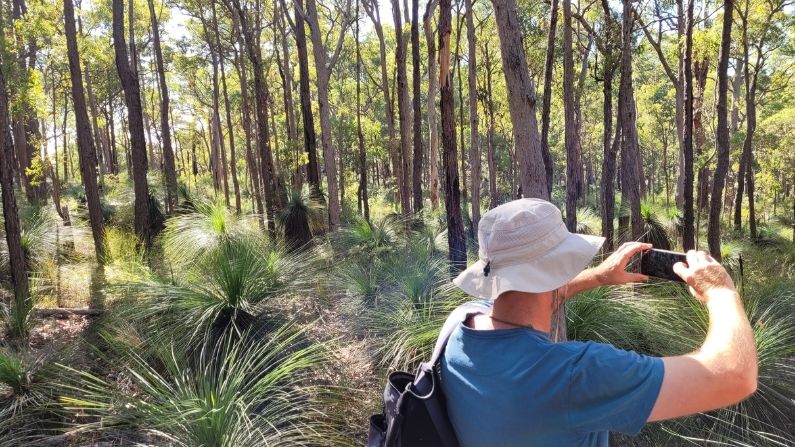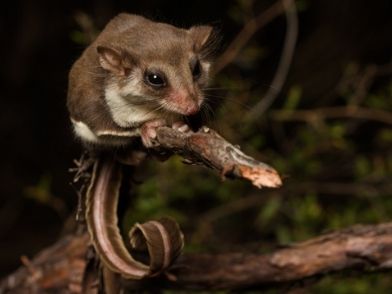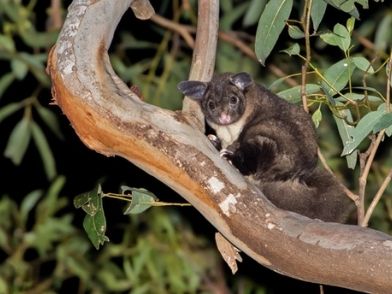Gliders
© Jasmine Zeleny
Nocturnal, possum-like gliders inhabit Australia’s woodlands and forests. Their defining
characteristic is the membrane (patagium) that extends between the fore and hind limbs and enables them to glide. Like all marsupials, they are born in an underdeveloped state — minute, blind, and hairless — before further developing in a ‘marsupium’, or pouch.
How we help gliders
Since 2006, Wildlife Queensland’s dedicated Queensland Glider Network has been educating communities and raising awareness of the importance of gliders and of revegetating glider habitat, installing nest boxes in areas where hollow-bearing trees are limited, implementing monitoring programs for local glider populations, and enhancing vital glider habitat.
 © Paul Revie
© Paul Revie
 © Jasmine Zeleny
© Jasmine Zeleny
Threats to gliders
- Habitat destruction and fragmentation.
- Climate change-induced increase in the frequency
and severity of bushfires. - Predation by feral species, including dogs, cats, and foxes.
- Barbed-wire fences.
About Australia’s gliders
Ten species of glider are found in Australia.
- Feathertail gliders — broad-toed feathertail glider (Acrobates frontalis) and narrow-toed feathertail glider (Acrobates pygmaeus)
- Sugar gliders — Petaurus breviceps, Petaurus notatus, and Petaurus ariel
- Squirrel glider — Petaurus norfolcensis
- Mahogany glider — Petaurus gracilis
- Yellow-bellied glider — Petaurus australis
- Greater gliders — central and southern greater glider (Petauroides volans) and northern greater glider (Petauroides minor)
They range in size from the tiny feathertail gliders, which can fit in a child’s hand, to the solitary and regionally endangered greater gliders.
The angle and speed of their glides vary depending on the ratio of their body weight to the surface area of their gliding membrane.
Gliders are arboreal, which means they are tree dwellers rather than ground dwellers. They have a varied diet of leaves, nectar, pollen, sap and insects. All species are hollow-dependent, so are found only in habitats that have plenty of tree hollows.
Click on the glider profiles below to find out more about each species.






